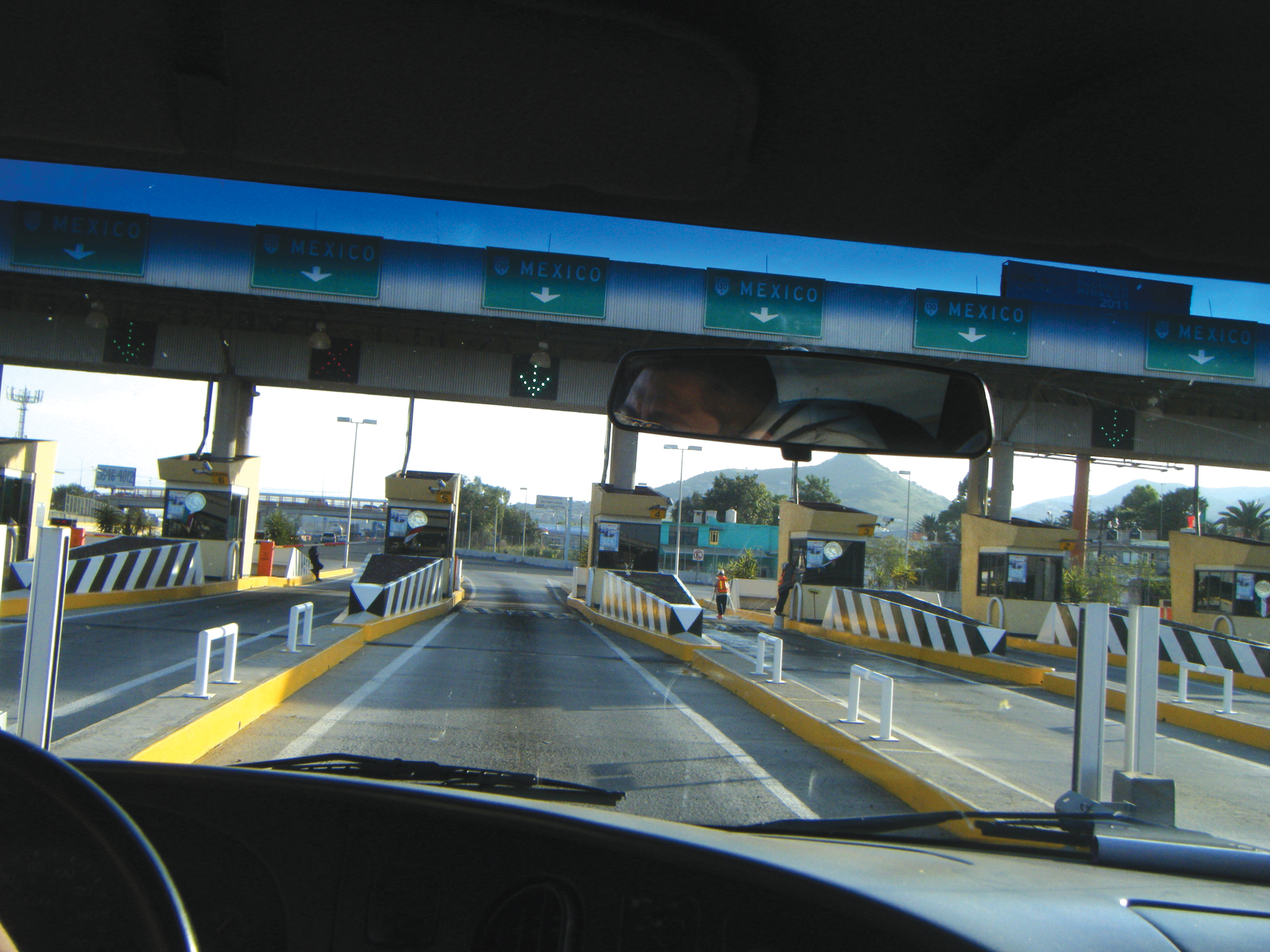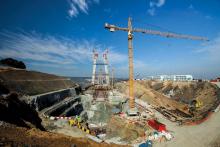
Rapid urban growth is resulting in massive mega cities with major transport needs and Mexico City is one of the world’s largest – Mike Woof reports
Mexico City is a vast, sprawling metropolis and one of the world’s largest cities, resulting in huge problems for its inhabitants, particularly with regard to infrastructure.
Measuring population size is an inexact science for large cities as suburban areas can add to the figures considerably, especially in developing nations where unplanned expansion is as common as it is hard to quantify. But according to figures announced in 2009, when Mexico City’s extensive suburbs and numerous shanty town areas were included, its population stood at an estimated 20,500,000. And given Mexico City’s continuing fast expansion rate, it is likely that the current figures are considerably higher. Exactly where it ranks in terms of the world’s largest cities is hard to discern, but it is highly likely to be in the top 10 and most probably in the company of Cairo, Delhi, Jakarta, Manila, Mumbai, New York, Sao Paulo, Seoul and Tokyo.
The mega city is a relatively modern phenomenon that developed in the 20th century and these are vast conurbations grown out of demographic shifts as people move to urban areas for the greater potential economic prospects they offer. Some cities have been population centres for centuries. But in the 20th century an array of other long-established cities, including Cairo, Lagos, Mexico City and Sao Paulo, began to see very fast growth rates indeed and with population levels outstripping available infrastructure.
Providing for urban populations poses problems for planners. But these are problems that have to be faced; as city living is becoming the norm for humanity and over half of the world’s population now lives in urban areas. At present cities use around two-thirds of global energy consumption, 60% of water consumption and produce 70% of greenhouse gas emissions. And by the year 2015 the number of mega cities is expected to rise to 60, with a combined population of
600 million.
Mega cities face serious issues with regard to transport, with Mexico City being a case in point. These enormous conurbations grow in several directions simultaneously and, in the case of those cities in developing nations, generally without a great deal of central planning and faster than utilities or transport infrastructure can be expanded to cope.
Shanty town areas are a frequent sight around most cities in developing nations and they can be densely populated, with little in the way of proper connecting roads, electricity or water supplies or even the most basic sanitation.
The economic strength of a mega city in a developing nation acts as a magnet for population growth. With a GDP of some US$390 billion, Mexico City is the eighth richest city in the world according to a recent study by Price Waterhouse Coopers and the richest in the whole of Latin America. It is also one of the world’s fastest growing economies and its GDP looks set to double by 2020. Because of this fast growing population, Mexico City has a desperate need for additional infrastructure, which both federal and local governments are targeting as a priority. Investments have been made in public transport but Mexicans rely heavily on private cars and new roads are needed.
From the air, the sheer scale of the city reveals the size of the challenge. Many of the hills surrounding Mexico City are covered in a sprawl of housing, with some earlier unplanned developments now having been accorded proper legal status while new building continues unabated. Mexico City has a teeming and highly mobile population but has long lacked a complete ring road, meaning it has struggled to cope with its enormous volumes of vehicle traffic. Although the ring road is planned, a considerable percentage of through traffic still has to negotiate the city, further exacerbating the congestion issue. Traffic in the city regularly grinds to a halt and journeys by car or bus at peak periods can be a frustratingly slow process. The city’s inhabitants have grown used to sitting in vehicles, watching as pedestrians on the pavement overtake the lines of cars, trucks and buses jammed nose to tail in the roadway. The enormous tidal flow of humanity heads into the city in the morning and out again in the evening, resulting in long tailbacks at peak periods.
According to Mexico’s Ministry of Road Transport and the Federal District (
Spiralling population growth in Mexico City suggests that in a few years the number of registered vehicles in the city could reach 10 million, which would result in utter gridlock. And anyone who has endured journeys during the city’s peak travel times will know how bad the traffic is at present, with average vehicle speeds attaining a lowly 32km/h and 65% of goods deliveries taking 2.5 hours door to door according to Setravi’s figures. Existing links have clearly become insufficient and, without new roads, Setravi has stated that the south west of the city would come to a standstill within five years.
But building new road links through such a massively congested city poses challenges and so a key solution has been to construct a major new link that is raised above ground level.
The 11km Autopista Urbana Sur (Urban Highway South) is being built by Mexican contractor
To ensure that the road link is built within the tight space considerations and tricky logistics operations that result from the city’s peak traffic jams, it is being built in prefabricated concrete sections away from the construction area. This is a technology in which ICA Ingenieria is a specialist, with the prefabricated concrete sections being erected by the firm’s construction division, Prefabricados y Transportes (PRET).
The project has set a major precedent in Mexico as it is the first time that prefabricated concrete sections have been used to build a complete overhead highway in the country. And this is also the largest urban highway project of its kind carried out so far in Mexico.
The Autopista Urbana Sur is intended to alleviate the severe traffic congestion that builds at peak periods in the streets on the southern side of the city. This new link features four lanes in all, with two running in each direction from San Geronimo to Tlalpan Viaduct, and will connect with the upper deck of the city’s existing elevated peripheral highway.
The project is being carried out for the Federal District Government and faces several challenges, Mexico City’s congested traffic being just one. This has required much of the erection work to be carried out at night, so as to avoid making congestion worse and so as to also prevent important construction deliveries becoming mired in traffic jams.
In terms of construction, Mexico City’s geology also provides huge challenges for civil engineers. The founding site of the city was originally Lake Texcoco (Tenochtitlán), which was reclaimed by its historical inhabitants. Although the lake was largely drained centuries ago, the basin that the city lies in still suffers from flooding and particularly in the rainy period between June and September. Drainage for this raised highway has been designed to eliminate potential issues of flash flooding during the seasonal rainy periods, as well as to prevent roadway contaminants from entering the ecosystem.
However the city’s underlying geology means that all structures can be subject to severe subsidence and this has also required extensive use of ground stabilisation techniques, including piling and geosynthetics. Worse still, Mexico City’s rapid expansion means that it also suffers from over-extraction of groundwater, which has exacerbated the subsidence problem.
If these factors were not bad enough by themselves, the city lies in a treacherous earthquake zone. An earthquake measuring 8.1 on the Richter scale struck the city in 1985 and wrecked infrastructure and housing alike. Since that time all new structures are required to be built to high standards to cope with anticipated future earthquakes, although this is not always the case in areas of unregulated housing construction on the city’s outskirts. To ensure its longevity, the new flyover has been designed to cope with both major earthquakes and Mexico City’s subsidence problems.
The congested nature of the city ruled against the concrete sections being made close to the site of the highway. The contractor opted instead to locate the prefabrication facility in Tláhuac, around 40km from the construction area, although this necessitated considerable effort with regard to transport.
The column sections weigh up to 425tonnes apiece while the horizontal sections can measure 36–48m in length and 4–6.5m wide depending on how many lanes they carry. Manufacturing of the sections at the pre-casting facility has been using a process that takes some 48 hours. Quality control is crucial for any prefabrication process and, once cured, the beams have had to be transported and placed in position on-site.
Efficient logistics have been crucial for the construction operation but have proven effective, with three to four of the massive sections being installed each night. The transport operation has also included a steady flow of concrete mixer trucks providing materials for the column foundations and for various other parts of the construction work. Trucks have been used for transporting a vast array of site machinery, including excavators, backhoe loaders, telehandlers and rough terrain forklifts, to the various workzones along the route.
The two LTM 11200-9.1 cranes have maximum lifting capacities of 1,200tonnes and are the largest mobile cranes in Mexico.
PRET's transport and assembly manager for the project, Luis Alberto Aguiniga Zavala, explained that the firm’s agreement with the city authorities restricted the major work for the project to night working, because of the high volumes of traffic during the day. Specific times were set for erecting the elements, from 10pm to 5am the next day.
This meant that there could only be around six hours in which to carry out the actual lifting work with the cranes, as heavy lifts of this sort require considerable preparation in locating the machines precisely as well as positioning the stabilisers and carrying out the necessary rigging. He said that the work has had to be carefully timed, although the low traffic volumes at night meant that delivery of the sections could be determined accurately.
As soon as each element has arrived onsite, it has been lifted from the truck and hoisted into position, with the work being carried out seven days/week.
Aguiniga said that the size of the main elements meant that they could only be erected one at a time, although smaller elements could be erected simultaneously at other parts of the project. With the largest supports weighing 425tonnes and the beams weighing 350tonnnes, it required both of the LTM 11200s working together to unload each of the massive concrete sections from the flatbed truck. The support columns all feature an integrated shoe and head design, which has speeded the erection process. Precise positioning of the columns has been required to locate each unit into deep foundations prepared in advance. One crane has been used to lift the top of the element, while the second has been used to position the foundation shoe of the column in its foundation.
Once the bottom of the column has been placed at the correct spot, the crane supporting the top end of each unit has then lifted the sections until they are vertical, before lowering the element into place. This type of procedure is tricky, even using the most modern equipment, but tight timings have required the sections to be installed to a specific schedule. And despite the size and weight of the columns, efficient operations have meant that each of these bulky units can be unloaded from the flatbed trucks and then hoisted into position in some 15 minutes.
In all, the Autopista Urbana Sur highway features 492 of the columns, varying in height from 5–25m, as well as a huge number of decking components and beams. And the highway features some 19,614 pre-cast components made from high-quality concrete rated at 600kg/cm2 and that has been tested on a continuous basis to ensure that quality standards are met. But the success of this complex operation has set a precedent and Aguiniga added that his firm expects to see further projects of this type being carried out in Mexico. He said, "We are using this project as a showcase for the advantages of prefabricated construction, and we are currently in negotiation for other projects of a similar scale.”
The new raised highway connects the second floor of the Periférico Beltway with the southwestern roadway system, going from San Antonio to San Jerónimo and running through Mexico City’s Álvaro Obregón, Coyoacán and Tlalpan districts. Once it is open to traffic, the new link will provide users with a highly sophisticated highway featuring automated tolling and with solar cells installed to power much of its electrics. For commuters the new link is expected to reduce journey times by up to 50% at peak periods, as well as helping to further reduce the city’s chronic pollution problem. When complete in October 2012, the road will be operated by Distribuidor Vial San Jeronimo-Muyuguarda, a joint-venture owned by Promotora del Desarrollo de America Latina and ICA.
The Autopista Urbana Sur forms part of a comprehensive programme of road public transport investment, aimed to boost mobility along the axis of Querétaro, Mexico City, Toluca, and Cuernavaca. Mexico’s infrastructure programme has been a key part of government policy, having been identified as a crucial component for the country’s economy. At the 2011
The Mexican Government’s policy of developing roads is intended to help boost the country’s trade with the economic giant next door. These faster, safer highways are being constructed on a grid pattern similar to that of the US interstate system, instead of radiating from capital Mexico City as before and the new links will reduce journey times and cut transportation costs. But Mexico’s limited federal funds have required the use of a combination of public and private financing to develop this network of tolled highway.
Above, the sky
Mexico City’s traffic problem and associated pollution issue is not aided by its geography. At an altitude of around 2,300m (some areas are up to 3,900m) and sitting in a valley surrounded by mountains, Mexico City suffers badly from pollution.
Sheltered by the mountains there is little air movement in the Valley of Mexico, allowing high levels of air pollution to develop. The comparatively thin air combines with this pollution to cause a serious health issue, one that the Mexican authorities have been taking steps to address. But the problem is made worse by the huge population now using insufficient road infrastructure, as well as the availability of comparatively cheap fuel, high levels of private vehicle ownership and a heavy reliance on those same private vehicles for transport.
Moves by the Federal and local authorities to deal with the pollution when it hits critical levels include temporary measures such as extending the 'Day Without A Car' programme to two days/ week and closing schools and factories until ozone and nitrogen oxide levels fall again. The World Bank has been active in helping cut Mexico City’s air pollution while the Mexican Government has closed some of the worst polluting factories and, since 1993, has required all cars to be fitted with catalytic converters. All vehicles are now required to have regular inspections to ensure that they comply with emissions limits.
The Mexican Government’s moves to address air pollution have had some effect and the problem is not as severe as it was at least.
In 1990 one published report said that Mexico City’s pollution was so bad it killed some 100,000 children per year and led to eye disease in 250,000, while life expectancy was reduced by up to 10 years. Successful measures include a ban on diesel trucks and buses in the city and these heavy vehicles are now powered by liquid petroleum gas (LPG). And the 36 air quality monitoring stations in the city show lead levels to have dropped 95% since 1990, while sulphur dioxide has dropped 86%, carbon monoxide by 74% and peak ozone levels are down by 57% since 1991. It should now be: And the 36 air quality monitoring stations in the city show lead levels to have dropped 95% since 1990. Meanwhile sulphur dioxide has dropped 86%, carbon monoxide by 74% and peak ozone levels are down by 57% since 1991.
KEY FACTS
Project Name: Autopista Urbana Sur (Urban Highway South)
Contractor: ICA Construcción Urbana@Cost: US$450 million
Benefits:
- Reduction of more than 50% in travel time.
- Reduction of polluting gases.
- The Southern Urban Expressway will solve the existing demand of roadway infrastructure in the City of Mexico, southern area.
- Over the length of 11.3km, the average over a year of daily traffic is expected to be 36,000 vehicles.
- This roadway will be part of the Comprehensive Plan of Roadways and Public Transport called the Urban Expressway, which seeks to offer an alternative of roadway mobility along the axis of Querétaro, Mexico City, Toluca, and Cuernavaca.
- The Southern Urban Expressway will interconnect the current second floor of the Periférico Beltway, going from San Antonio to San Jerónimo, and will be interconnected to the elevated roadways of the Northern Periférico Beltway and the southwestern roadway system in Mexico City.
- It is an intelligent expressway with an automatic toll system and energy collection through solar cells








